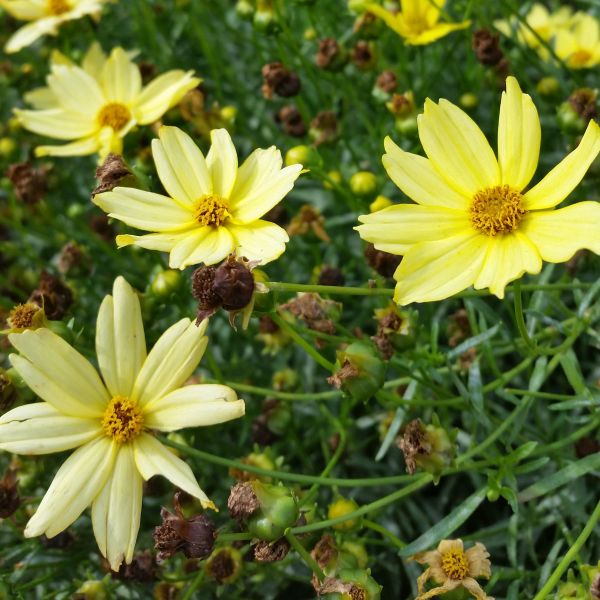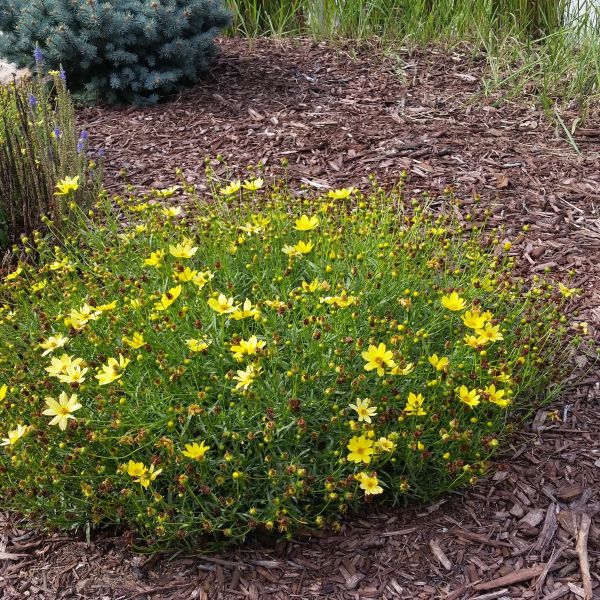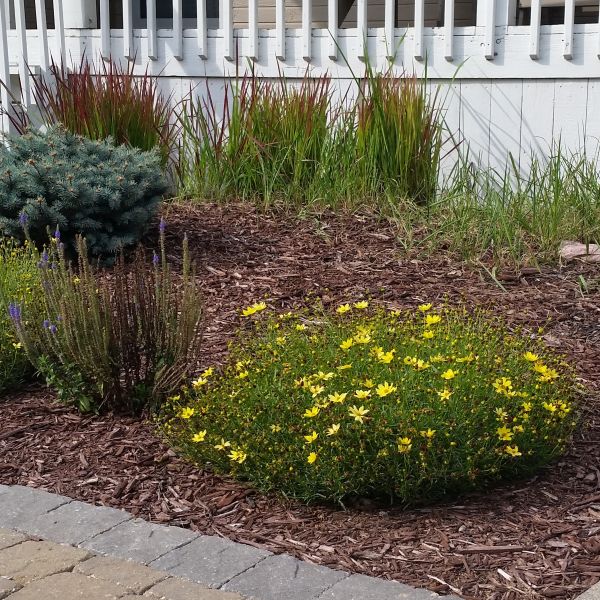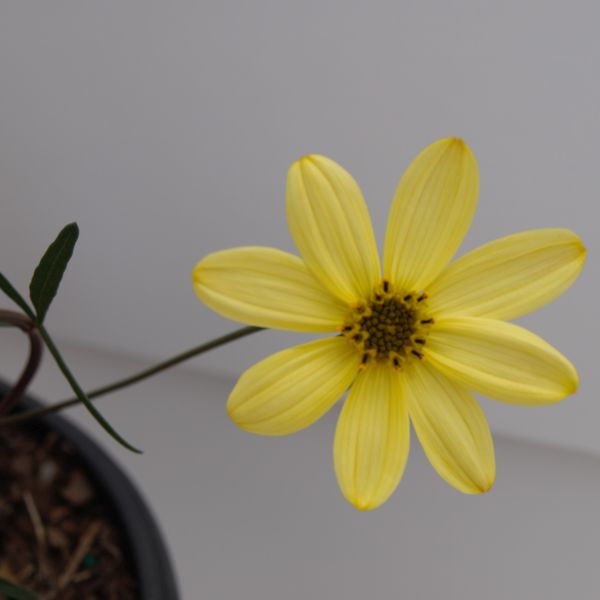Moonbeam Coreopsis
Coreopsis verticillata 'Moonbeam'
Plant Sentry™
Plant Sentry™

Plant Sentry™ Protected
Your order is protected by our compliance system that:
- Prevents restricted plants from shipping to your state
- Ensures plants meet your state's agricultural requirements
- Protects gardens from invasive pests and diseases
Delivery and Shipping
Delivery and Shipping
Delivery and Shipping
Fast, Safe Plant Delivery
Ships in 3-4 business days • Tracking provided • Weather protected
| Under $50 | $9.99 |
| $50 - $99.99 | $14.99 |
| $100 - $149.99 | $16.99 |
| $150 - $198.99 | $24.99 |
| $199+ | FREE |
✓ Zone-specific timing • ✓ Professional packaging • ✓ Health guarantee
Understanding Plant Options
Nature Hills offers plants in two main formats:
- Container Plants: Grown in pots with soil, sized by container volume and plant age
- Bare Root Plants: Dormant plants without soil, sized by height measurements
Container Plant Sizes
Container sizes indicate plant age and growing capacity rather than liquid volume equivalents. Our containers follow industry-standard nursery "trade gallon" specifications, which differ from standard liquid gallon measurements.
Young Plants (6 months to 18 months old)
| Container Size | Actual Volume | Metric Equivalent |
|---|---|---|
| 2" x 2" x 3" | 0.18 - 0.21 dry quarts | 0.20 - 0.23 dry liters |
| 4" Container | 0.31 - 0.87 dry quarts | 0.35 - 0.96 dry liters |
| 4.5" Container | 0.65 dry quarts | 0.72 dry liters |
| 6" Container | 1.4 dry quarts | 1.59 dry liters |
| 1 Quart | 1 dry quart | 1.1 dry liters |
| 5.5" Container | 1.89 dry quarts | 2.08 dry liters |
Established Plants (18 months to 2.5 years old)
| Container Size | Actual Volume | Metric Equivalent |
|---|---|---|
| 2 Quart | 2 dry quarts | 2.2 dry liters |
| #1 Container | 2.26 - 3.73 dry quarts | 2.49 - 4.11 dry liters |
| 5" x 5" x 12" | 3.5 - 4.3 dry quarts | 3.85 - 4.74 dry liters |
Mature Plants (2-4 years old)
| Container Size | Actual Volume | Metric Equivalent |
|---|---|---|
| #2 Container | 1.19 - 1.76 dry gallons | 5.24 - 7.75 dry liters |
| #3 Container | 2.15 - 2.76 dry gallons | 8.14 - 12.16 dry liters |
Large Plants (3-5 years old)
| Container Size | Actual Volume | Metric Equivalent |
|---|---|---|
| #5 Container | 2.92 - 4.62 dry gallons | 12.86 - 20.35 dry liters |
| #6 Container | 5.25 - 6.01 dry gallons | 23.12 - 26.42 dry liters |
| #7 Container | 5.98 - 6.53 dry gallons | 26.34 - 28.76 dry liters |
Bare Root Plants
Bare root plants are sold by height from the root system to the top of the plant. Plants may exceed minimum height requirements.
Common Sizes:
- Trees: 1 foot, 2 feet, 3 feet, 4 feet, 5 feet, 6 feet
- Shrubs & Perennials: 1 foot, 18 inches, 2 feet
Important Notes
Container Volume Specifications
- Trade Gallon Standard: Our containers follow industry-standard "trade gallon" specifications established by the American National Standards Institute (ANSI Z60.1) for nursery stock
- Volume Variations: Actual soil volume may vary due to plant root systems and growing medium settlement
- Age Indicators: Container size primarily indicates plant age and maturity rather than liquid volume equivalents
Growing Conditions
- Plant size can vary based on variety and growing conditions
- Container size helps indicate plant maturity and establishment level
- Larger containers generally mean more established root systems and faster landscape establishment
Seasonal Availability
- Bare root plants are available seasonally when dormant
- Container plants are available throughout the growing season
- Specific varieties may have limited availability in certain sizes
Questions?
For questions about specific plant sizes or availability, please contact our plant experts who can help you choose the right size for your landscape needs.

Plant Sentry™ Protected
Your order is protected by our compliance system that:
- Prevents restricted plants from shipping to your state
- Ensures plants meet your state's agricultural requirements
- Protects gardens from invasive pests and diseases
Plant Profile & Growing Essentials
Attracts pollinators, Cold hardy, Drought resistant, Flowering, Fast-growing, and Deer-resistant
Specifications
Specifications
-
Botanical Name
-
Height
-
Width
-
Growing Zones
-
Sunlight
-
Growth RateModerate
-
Flower Color
-
Leaf Color
-
Fall Color
-
NativeYes
-
Pollinator FriendlyYes
-
Pollinator Required
-
Bloom PeriodEarly Summer, Late Summer, Early Fall
-
Does Not Ship ToAK, HI, ID, MT
Planting & Care Instructions
Planting & Care Instructions
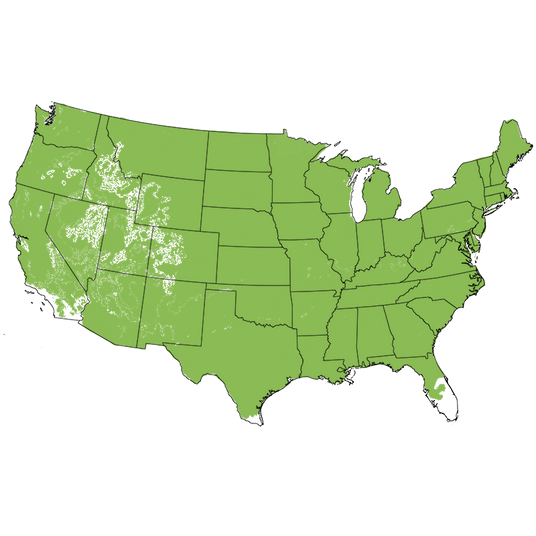
Growing Zones 3-9
Fast-Growing Prolific Bloomer Moonbeam Coreopsis!
- Pale Creamy-Yellow Blossoms
- Prolific Blooms & Long Bloom Time
- Mounded Clumping & Compact Growth
- Ultra Finely Textured Foliage
- Airy Clumps of Bright Green Leaves
- Great for Containers, Naturalizing & Sunny Gardens
- Hot Sunny Sites & En Masse
- Cold Hardy Tough Native Perennial
- Easy Care & Low Maintenance
- Drought Tolerant
- Xeriscaping & Firescaping
- Salt, Deer, Heat & Mildew Resistant
- Attracts Pollinators & Songbirds
Perfect for creating a natural, informal landscape with lots of butterflies, Moonbeam Coreopsis (Coreopsis verticillata 'Moonbeam') is an improvement on the native species of Threadleaf Coreopsis. Also known as Tickseed, these are fine-textured beauties for any sized landscape!
Moonbeam is just as fast-growing, hardy and easy care as the native wildflower, featuring glowing creamy pale-yellow blossoms. Each petal looks pleated with a small button center.
You'll love the fine-textured, green foliage because it provides the perfect backdrop for the multitude of creamy-yellow flowers that blanket this hardy perennial from late spring into fall!
Continuous blooms make for a reliably stunning display, so use this in broad sweeps for a low-maintenance landscape.
The 1992 Perennial Plant of the Year and its gorgeous yellow daisy-like flowers attracts butterflies and in the fall, the dried seed heads attract a great many songbirds looking for an autumn treat.
How to Use Moonbeam Coreopsis In The Landscape
Plant it in seasonal containers as a beautiful filler, these work to lighten and brighten planters, window boxes or patio plantings with their graceful presence!
Plant en masse and in large swaths in tricky planting sites, or that ‘hell strip’ along the road for 3 seasons of color. Great to intersperse throughout existing garden beds by grouping in multiples or in gentle zig-zags along the length of your garden beds. It will spread to cover the ground in a really delightful way as groundcover and filler.
You'll love watching the flower heads nodding in the breeze throughout your Rock and Cottage gardens, or mounding in the front of your Perennial and Pollinator beds and borders.
Line walkways and skirt sunny garden structures with these lacy perennials for a finished, informal look that stands up to the sun! Fantastic low mounding plants, these work as edging for your beds and garden plots.
Readily naturalizing and politely spreading, these natives happily ramble through meadows and prairie plantings sites. You’ll enjoy butterflies and pollinators galore as they seek out the rich nectar resources. Fall brings songbirds to the scene where they are grateful for the rich seeds before winter.
#ProPlantTips For Care
Coreopsis do their very best in full sun and are easy to grow native plants. These herbaceous perennials thrive in USDA growing zones 3 through 9.
Thriving in poor, sandy and rocky soils, Tickseed also does well in fertile soil. Any well-drained soil with moderate moisture content is preferred, but these are very drought tolerant once established.
While very drought-tolerant, you’ll get the best blooms and longevity by providing supplemental watering in times of need. A generous layer of mulch helps retain soil moisture as well as insulate the root system from heat and chill.
Provide ample water for your young plants while they become established, not allowing them to dry out between waterings. Then reduce your watering to moderate, yet consistent moisture during the heat of summer and when flowering.
Deadhead if you like, however, the fluffy mounds of Coreopsis tolerate a shearing to promote a rebloom. Leave some seedheads for your birds in fall, since many Goldfinch and other songbirds will drop by for a visit! Prune in early spring before you see new growth, for a fresh, clean appearance.
For fantastic pollinator drawing flowers and creamy mellow hues, the Moonbeam Coreopsis will delightfully fill your garden beds with beauty! Head over to NatureHills.com today to place an order before they’re gone!
Head over to our Garden Blog to read about how to Prepare a Feast for Your Pollinators!
Drought Tolerant, Improved Nativar
Coreopsis verticillate "Moonbeam' is one of the thread leaf varieties of Coreopsis. Little is available about its origin, but its unique faded color and mounding wispy character, quickly lead it to become one of the lead selling varieties of Coreopsis. By 1992, Coreopsis Moonbeam is recognized as the perennial of the year.
Coreopsis varieties are native to the United States. The Coreopsis verticillate is native to the eastern U.S, south to Florida, and west to Arkansas.
Coreopsis verticillate varieties are commonly called tickseed because the seed is said to look like a tick. Moonbeam Coreopsis is a sterile variety and does not produce seeds; as a result, there is no problem with reseeding. Coreopsis Moonbeam does spread by rhizomes.
Though recognized as a verticillate, some research suggest that Coreopsis Moonbeam may be a cross of Coreopsis verticillate and Coreopsis rosea.
Moonbeam Coreopsis is adapted to a wide range of soils and climates. The plant requires little water once established. It's recommended for Drought tolerant or xeriscape plantings. Moonbeam Coreopsis is considered a LOW water user by the California Department of Water Resources, Water Use Classification of Landscape Species (WUCOLS) list, requiring little water after being established.
This plant is also on a number of lists as a fire-resistant plant. Firesafe Marin and Montana State University both include Coreopsis species as fire-resistant plants. Check with your local fire department to consider Moonbeam Coreopsis for your defensible space planting in a firewise landscape.

